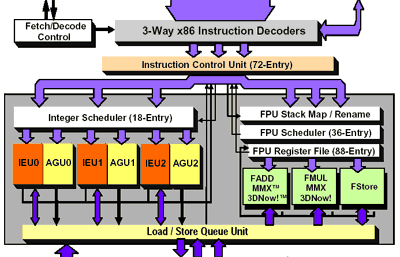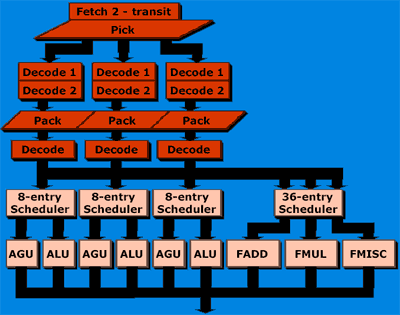AMD Opteron Coverage - Part 1: Intro to Opteron/K8 Architecture
by Anand Lal Shimpi on April 23, 2003 3:03 AM EST- Posted in
- CPUs
Designing a CPU, More Specifically the K8
When we first looked at the K8 around two years ago we noted that, architecturally, not much had changed from the K7. Many attributed this to the old axiom, "if it ain't broke, don't fix it," and to a certain extent they were correct. The K7 microarchitecture proved to be an excellent performer, and even to this day has managed to at least remain competitive with Intel's NetBurst microarchitecture found in the Pentium 4.
First let's take a look at the K7 block diagram:

Next, let's compare it to a portion of the K8 block diagram:

As you can see, the physical number of execution units remains unchanged from the K7. Remember that the K8 core has to be used as the base for both desktop and enterprise class processors, so "going wide" (meaning adding more execution units) wouldn't make an incredible amount of sense for the multipurpose nature of the K8.
The next thing to notice is that there are already indications of slight changes from the K7. Note that although the floating point units have the same medium-sided scheduling window (36-entry), the integer units are now fed by a larger set of schedulers (24-entry vs. 18 entry in the K7).
Why would AMD expand the size of the integer scheduling window of the K8 but leave the same number of execution units? For the answer to this, we have to look at the first limitation in how "big" of a CPU AMD can build - the branch prediction unit.










1 Comments
View All Comments
skunklet - Thursday, June 30, 2005 - link
YEAH